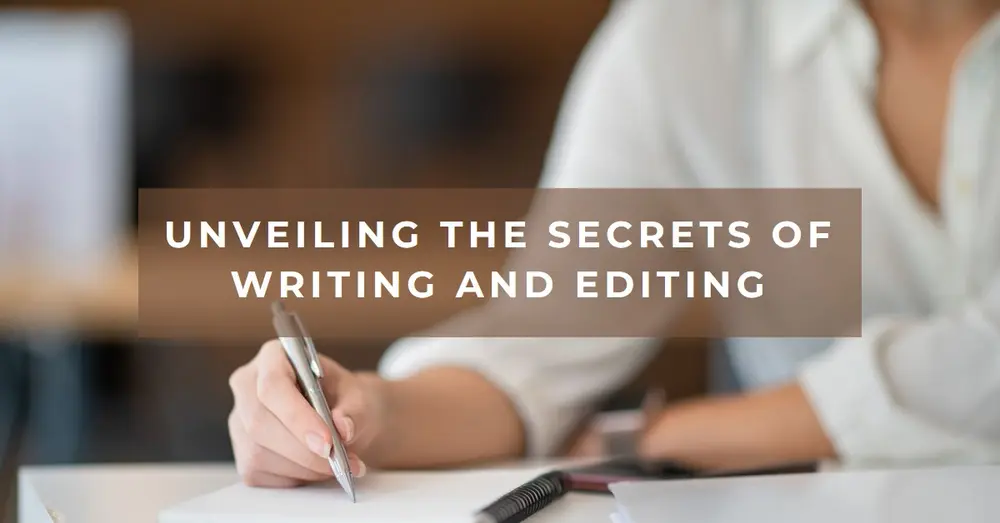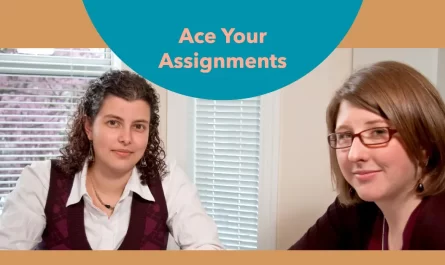Key Takeaways
- Outlining before writing helps organize ideas and maintain focus.
- The Pomodoro Technique enhances productivity by breaking work into intervals with a break
- Editing with fresh eyes, such as reading aloud or changing format, improves accuracy.
- Short sentences and paragraphs improve readability and engagement.
Writing and editing are two fundamental skills that go into the making of effective communication. Whether writing an academic paper, a business proposal, or even a blog post, having these skills down will help clarity considerably while ensuring that your message gets to its audience. Such techniques, however, lie beyond grammar and structure. Among them, eight secret techniques define the writing and editing process – more than conventions can offer. Read the rest of the article to know further.
The Power of Outlining Before Writing
A clear structure before writing is important in creating coherent content.
Importance of Creating a Clear Structure
A well-thought-out outline will be like a blueprint of what you are going to write. It breaks up difficult ideas into manageable sections and also reminds you of the important points you would want to cover. This saves you from redundancy while at the same time making sure that every part of your content contributes towards your message.
Editing for a Fresh Perspective
Sometimes, you may need to take some time off from your work and approach it fresh. This step is one of the most effective ways of fine-tuning your editing process. When you leave your writing and go back to reading it later, you see it through new eyes. You are then able to pick up some errors that you would have easily let slip away when you were writing your first draft.
Techniques to Come Back with New Fresh Eyes
- Read Out Loud: Reading your work aloud helps catch awkward phrasing, missing words, and repetitive patterns, improving overall flow and clarity. Hearing the text reveals issues often missed during silent reading.
- Changing Format: Switching the format, such as printing or adjusting font size, offers a fresh perspective on your writing. This change helps spot formatting mistakes and inconsistencies more easily.
Breaking Up Long Sentences and Paragraphs
Shorter Sentences and Paragraphs Improve Readability. How? Here is the answer:
Short sentences and paragraphs greatly improve readability because they facilitate easier consumption of text. When presented with lengthy, dense blocks of text, readers become confounded and disengaged and therefore comprehend less of what the writer says. Shortening lengthy sentences and paragraphs will help break up your message in such a way that will keep the reader’s attention.
It also enables a far better organization and accessibility presentation of ideas since any single sentence and paragraph can be centered around an idea or a point.
Overcoming Writer’s Block with the “Pomodoro Technique”
Introducing the Pomodoro Technique in your life can help you stay productive and creative without letting writer’s block slow down.
How it boosts creativity and productivity
The Pomodoro Technique can provoke creativity and productivity by breaking up your writing into manageable bits. Its time constraint will help ensure that you focus more intently on the tasks before you, not getting frustrated over their length. During those breaks, your brain gets a respite, which could also mean new ideas or even new directions when you get back to work. For most people who attempt it, this rhythm helps them keep their regular writing habits without running the risk of burning out.
The Art of Word Selection: KISS
KISS: Keep It Super Simple, the most used technique. Know about it further:
How to Minimize Unwanted Jargon and Filler Words
Clear and simple writing is usually the sign of good writing, ridding much that is jargon and filler words. Jargon-specialized terms, that is, limited to a specific group – can alienate or perplex readers not privy to your use of language. Fillers such as “very,” “just,” or “actually” litter much writing and do little to add meat to the bones. Use very simple language to convey your idea. When you find that it is just about impossible to communicate effectively without using a specialized term, then define your term clearly or supply enough background information to enable the reader to understand what your terms might imply.
Specific and Powerful Language to the Rescue
Choosing specific and powerful words makes your writing stand out and makes your message more compelling. Accurate words hold the interest of the reader and convey what the person is reading. Because you can write based on vivid descriptive words, you will be able to communicate your message well and have an influence on the readership.
Proofreading Backward: A Simple Trick to Catch Errors
You can improve the accuracy of your work as well as its professional level when adopting this approach to your proofreading, and be sure that your final draft will be clean and free of errors.
Benefits of proofreading sentences
Reading sentences backward proves to be an effective way of catching errors that you might miss reading normally because by reading in reverse, you are compelled to pay attention to individual words and sentences rather than getting carried away with the general sense of the text.
The Secret of Active Voice for Stronger Writing
Below are 2 secrets revealed for you to make your writing stronger.
Why is active voice stronger?
Active voice is the most efficient way of clear and impactful writing. In an active sentence, the subject acts; that is how the statement becomes more direct and interesting. “The team completed the project” is active, whereas the same action in a passive sentence is “The project was completed by the team.” Active voice keeps your writing concise so the reader can quickly pick up on the essence of what’s being said.
How does passive voice weaken your message?
On the other hand, a much-too-frequent use of the passive voice leads to wordy, less interesting sentences, and ambiguity as to who is acting. While the passive voice may be useful when you’re writing formal or scientific prose. If you’re using the passive voice too much, it could weaken your message by making it sound indirect or even rather impersonal.
Leveraging Online Editing Tools to Save Time
It’s transformed the approach towards writing and proofreading. Tools like Grammarly and Hemingway improve readability, grammar, and style. ILovePDF 2 is also a must-have edit assistant. The tools give instant feedback to an author who can easily identify errors and bring the flow of content to the point.
For example, Grammarly shows grammatical mistakes and provides suggestions for sentence structuring whereas Hemingway focuses on readability by marking too complicated sentences as well as passive voice usage. ILovePDF 2 can edit, merge, and compress PDF files. One would need its functions in case someone is asked to work with as many documents as possible with maximum efficiency.
Sum Up
Mastering the art of writing and editing involves more than just understanding grammar and structure. By using all these eight techniques, you can significantly make your communication clearer and more effective. When you use these practices, you will see that your writing has become engaging and your editing process more effective, thus your messages clearer and more compelling.



